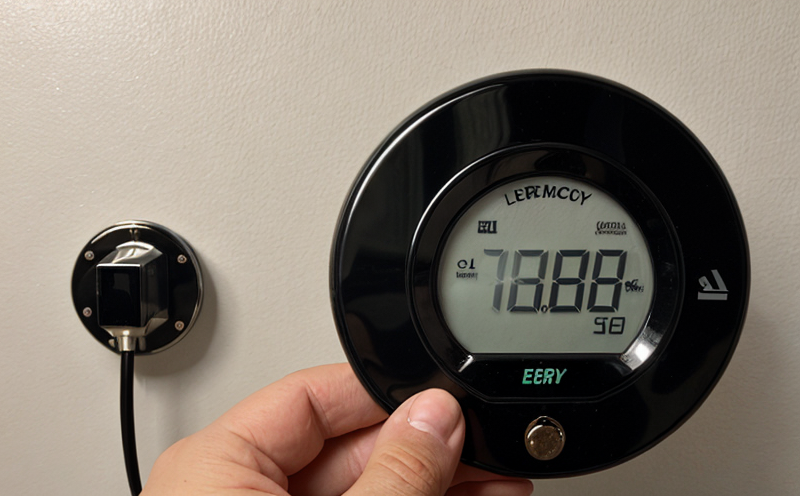ETSI EN 300 132 Power Consumption Testing for Telecom Equipment
The European Telecommunications Standards Institute (ETSI) standard ETSI EN 300 132 is a crucial document that establishes the testing methodology and criteria for measuring power consumption in telecommunications equipment. This standard aims to ensure that telecom devices comply with energy efficiency regulations, thereby reducing operational costs and environmental impact.
The standard applies to various types of telecom equipment including base stations, repeaters, transceivers, and other network components that consume electrical power during operation. Compliance with ETSI EN 300 132 is mandatory for manufacturers seeking CE marking in the European Union market. This requirement underscores the importance of accurate and robust testing procedures.
The testing protocol outlined in this standard involves measuring the average power consumption under defined operating conditions, which include normal operation as well as specific fault or stress scenarios. The test setup typically includes a controlled environment where equipment is powered on for a specified duration while performing its intended functions. Power readings are captured using high-precision instruments capable of recording milliwatts up to kilowatts.
The standard specifies several key parameters that must be considered during testing, such as the ambient temperature range, signal levels, and modulation types. These conditions simulate real-world usage scenarios and provide a more accurate assessment of power consumption compared to static measurements taken under ideal laboratory conditions. Understanding these variables is essential for ensuring compliance with ETSI EN 300 132.
Compliance testing also involves evaluating the equipment's performance over extended periods, often referred to as "steady-state" or "long-term" tests. During these tests, continuous monitoring of power consumption ensures that any deviations from expected values are identified and addressed promptly. Additionally, transient events like signal dropouts or switching between different operating modes should be accounted for in the test protocol.
It is important to note that ETSI EN 300 132 does not merely set a limit on power consumption but also provides guidelines on how to achieve and verify this compliance. This includes recommendations on optimizing equipment design, using efficient components, and implementing advanced power management techniques such as sleep modes or adaptive clocking.
The standard's emphasis on continuous improvement through iterative testing cycles encourages manufacturers to innovate continuously in pursuit of higher energy efficiency standards. By adhering to these stringent requirements, telecom companies can contribute significantly towards sustainable development goals while maintaining competitive advantage in the global market.
Benefits
- Enhanced Energy Efficiency: Ensures that telecom equipment operates efficiently, minimizing unnecessary power usage.
- Cost Savings: Reduces operational costs by optimizing energy consumption, leading to lower electricity bills for both manufacturers and end-users.
- Regulatory Compliance: Facilitates adherence to international standards like ETSI EN 300 132, ensuring smooth market entry into the European Union.
- Sustainability: Promotes greener technologies by encouraging the development of eco-friendly telecom solutions.
- Better Performance: Identifies inefficiencies early in the design phase, allowing for improvements that enhance overall device performance.
International Acceptance and Recognition
ETSI EN 300 132 enjoys widespread recognition across Europe due to its rigorous testing protocols which align closely with broader European Union directives on energy efficiency. The standard has been adopted by numerous regulatory bodies outside the EU as well, reflecting its global relevance.
Many countries worldwide have incorporated provisions similar to those found in ETSI EN 300 132 into their national legislation or voluntary guidelines. For instance, Australia's AS/NZS 4659 specifies requirements for measuring power consumption of telecommunication equipment, closely mirroring the approach outlined by ETSI.
In North America, although no direct equivalent exists to ETSI EN 300 132 at the federal level, individual states like California have implemented similar measures through initiatives such as Title 20. These efforts underscore the growing importance of energy efficiency in telecommunications across different regions globally.
The standard's acceptance extends beyond regulatory frameworks into industry practices where leading companies adopt it voluntarily to demonstrate leadership in sustainable technology innovation. This voluntary adoption contributes significantly towards fostering an environment conducive to technological advancement and responsible resource utilization.
Use Cases and Application Examples
| Use Case | Description |
|---|---|
| Base Station Optimization | Evaluating different configurations of base stations to identify the most energy-efficient setup. |
| Network Upgrade Planning | Determining power consumption levels before and after upgrades to inform cost-benefit analyses. |
| New Product Development | Testing prototypes early in the development cycle to ensure they meet required energy efficiency targets. |
| Compliance Audits | Performing periodic checks on existing equipment to confirm ongoing compliance with ETSI EN 300 132 standards. |
| Sustainability Reporting | Incorporating power consumption data into sustainability reports to showcase company commitment to environmental responsibility. |
| Market Entry Strategy | Ensuring all products meet local and international standards before launching them in new markets. |
| Customer Satisfaction Improvement | Offering more environmentally friendly options that appeal to increasingly environmentally conscious consumers. |





